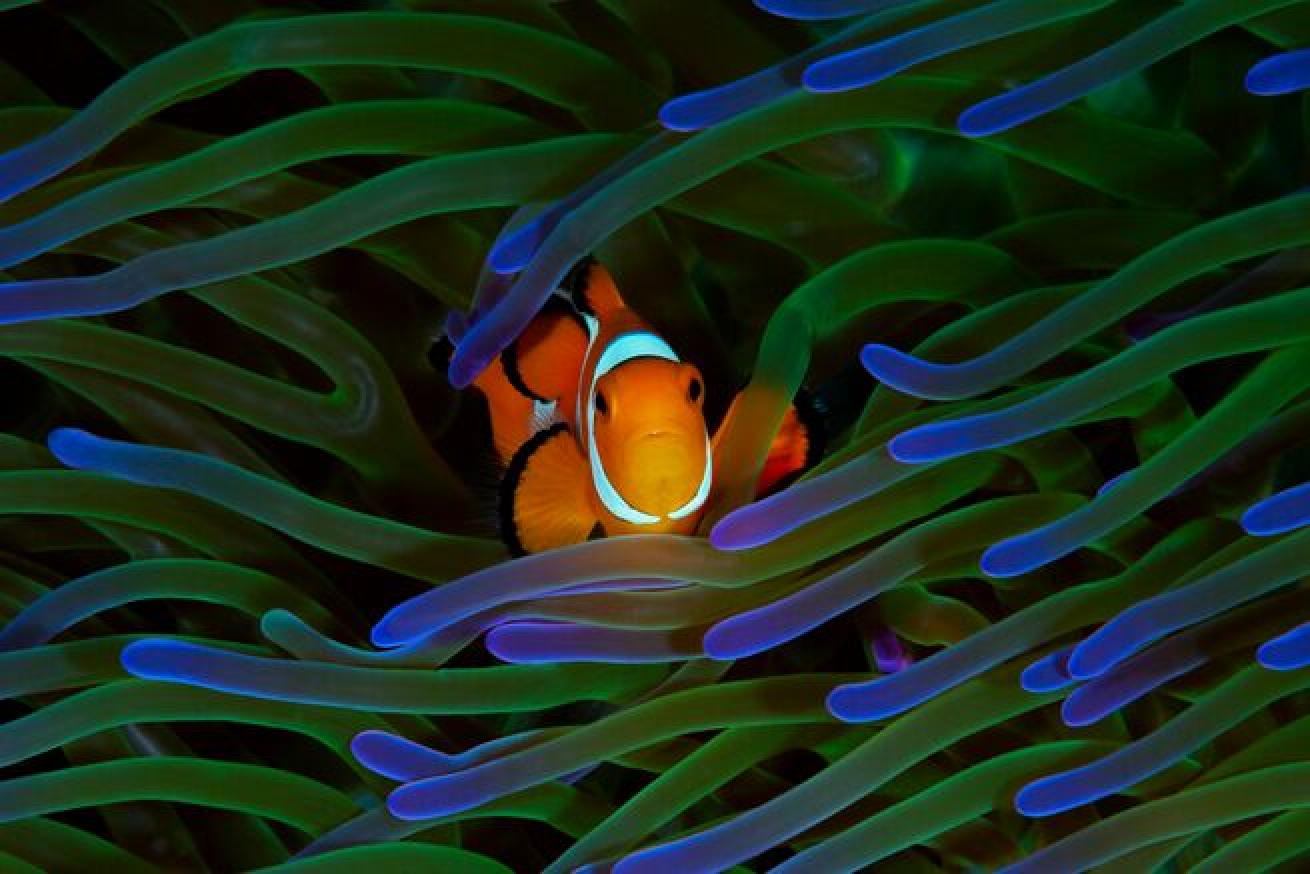What Happens to a Clownfish When It Changes Sex?

Shutterstock/J'nelA clownfish hides out in an anemone in Raja Ampat, Indonesia.
If your knowledge about clownfish is mostly gleaned from watching the movie Finding Nemo, you may be surprised to learn that Marlin should have been a female and Nemo, the energetic and adorable title character, should have been his mate.
Wait, what?
The Process of Sequential Hermaphroditism
To understand what Finding Nemo got wrong, you have to understand sequential hermaphroditism. Hundreds of species of fish undergo this biological process, which is a kind of sexual transition. For scuba divers, perhaps the most identifiable (and beloved) undersea hermaphrodite is the clownfish, which is born exclusively male. Not all marine sequential hermaphrodites begin life as males; moon wrasses in the Indian Ocean and western Pacific, for example, all start off as females and become males, and some fish, such as Asian sheepshead wrasse, spend a number of years as one sex (Asian sheepshead wrasses are born female) and then switch gender. The mangrove killifish is both male and female; it self-fertilizes for its entire reproductive life. In fact, about 2 percent of fish species display some kind of hermaphroditism, or roughly 500 different species worldwide.
Related Reading: Discovering Patagonia's Winged Comb Jelly
Clownfish carry both female and male reproductive organs. In the female-dominated clownfish community, the female is the largest fish. She mates only with the breeding male, usually the second-largest and most aggressive male in the community. The rest of the community are made up of sexually immature males. When the female dies, the breeding male will get first choice of food and begin to gain weight, eventually becoming female.
The biological change inside the fish is governed by hormonal changes—chemical shifts that trigger a complex and cascading effect,” says Marah J. Hardt, Ph.D., founder and CEO of OceanInk, and author of Sex in the Sea. For the transitioning male, the testes dissolve and ovaries form.
The breeding male then “suppresses maturation of juveniles in the anemone, so they are unable to compete with him for the one female,” explains Hardt. This happens via sometimes subtle behavioral tactics, such as the breeding male snatching the largest bits of food, which helps him maintain his bulkier size.
In general, biologists aren’t 100 percent positive about why sequential hermaphroditism has evolved, but it is thought that the preferred living arrangements of clownfish played a role. These fish are homebodies, sticking close to their crib, which is a sea anemone they’ve formed a symbiotic relationship with. In order to get a chance to breed, they may have evolved as sequential hermaphrodites.
“Clownfish cannot afford to wander off to find a mate; there are just too many predators on the reef, which makes finding a date hazardous for clownfish,” says Hardt. “So, they tend to stick to their anemone homes, and partner up with whoever happens to reside there too.”
What the Finding Nemo Story Got Wrong
So, back to Finding Nemo. Leaving home is the first mistake Nemo made in Finding Nemo, but scientifically speaking, it’s not the first mistake the film’s producers made. Nemo’s mom, Coral, dies early in the film when she is gobbled up by a barracuda. Nemo’s dad, Marlin, remains his dad, but he should have become the new dominant female. And then, Nemo, next-largest (actually, only) clownfish would have become the dominant male and the new female’s mate. Well, as you can see, that hardly would have suited the plotline of a Disney-Pixar film.
But if this bit of evolutionary gender-bending is not suitable for Disney-Pixar, it’s perfect for real-world clownfish.
“In mammals, size does not affect egg number. All us females—no matter how short or tall, skinny or big-boned—are born with roughly the same number of eggs, and that number goes down as we age,” says Hardt. “This is not the case in fish. For fish the bigger the female, the more eggs she can lay. And this relationship is exponential—a fish that doubles in size may lay 10 times more eggs. So, by starting off as male and then transitioning to female when big, clownfish maximize the number of eggs a female can make. This is important because clownfish need both parents to tend to their eggs—which isn't the case in all fish species. But in clownfish, females lay eggs on the seafloor, and both the male and female must take turns to clean and guard them. So, there is a need for strong coupling; the two fish depend on each other. And if you are going to partner up, it’s best to have the bigger individual be a female to maximize egg (and thus, offspring) production. Sperm is cheap to make, so a small male can make plenty of sperm to fertilize all a big female's eggs. This is why switching from male to female makes sense for clownfish—it works for their specific mating strategy.”
Related Reading: 7 Liveaboards to Book if You Love to Learn
Hardt’s book Sex in the Sea explains the mating behaviors of a number of marine creatures in the ocean. She interweaves pop-culture images and contemporary analogies with scientific facts. Example: male blue whales “getting their Barry White on” by emitting deep baritone sounds while searching for a female.
What did she find to be the weirdest sex change in fish?
“It’s a tie between the bluebanded goby, which can flip-flop back and forth between sexes, and the bucktooth parrotfish, which somehow determines when and if to change sex based on some not-so-simple calculations. The fact that one fish can change sex bi-directionally throughout its lifetime was a big surprise to me—and is truly amazing when you consider the energy costs and amount of work that sex change entails.”










